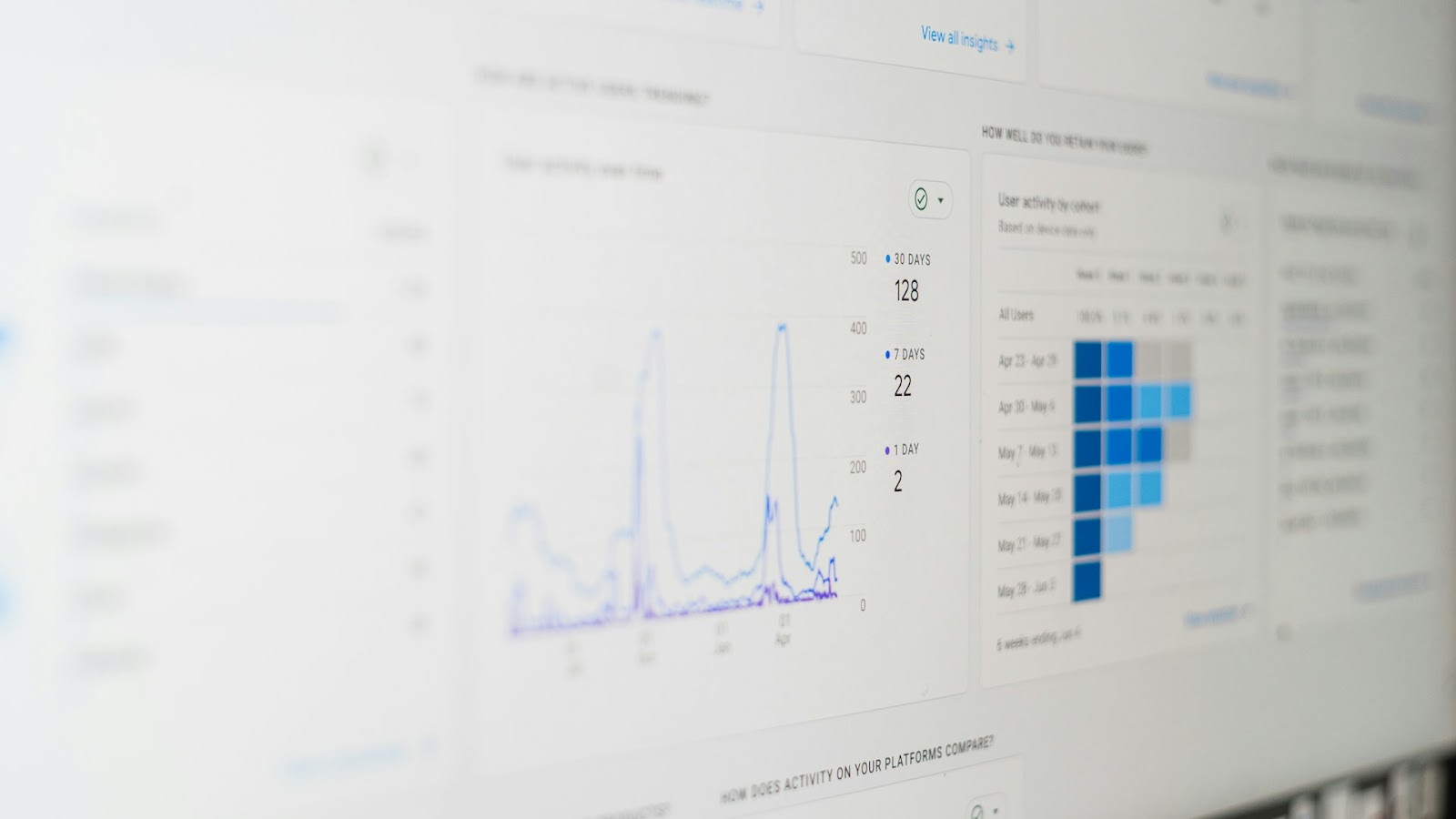Did you know that 66% of marketers consider backlink building their most challenging SEO task? Yet the top-ranking pages on Google have an average of 3.8x more backlinks than positions 2-10.
That’s why mastering competitor link analysis has become crucial for modern SEO success. However, simply copying your competitors’ backlink strategies isn’t enough – you need a systematic approach to identify, analyze, and acquire the most valuable links in your industry.
In fact, our research shows that businesses implementing structured competitive link analysis see up to 40% faster growth in their domain authority compared to those using random link building tactics.
We’ll walk you through our proven method for conducting an effective competitor link analysis, from selecting the right tools to creating an actionable acquisition strategy. Whether you’re an SEO beginner or a seasoned professional, you’ll learn how to turn your competitors’ backlink profiles into your roadmap for success.
Let’s dive into the step-by-step process of mastering competitor link analysis and start building a stronger backlink profile for your website.
Understanding Competitor Backlink Analysis Fundamentals
Backlinks remain one of the most powerful forces in SEO strategy. According to industry studies, pages with the highest number of total backlinks tend to rank best in Google, with the #1 result having an average of 3.8x more backlinks than positions 2-10. This fundamental principle drives the importance of understanding what makes competitor backlinks so valuable.
What makes backlinks valuable for SEO
Backlinks function as digital votes of confidence from other websites. When a reputable website links to your content, search engines interpret this as a signal that your content is valuable and trustworthy. Consequently, the more high-quality backlinks your site accumulates, the greater your perceived authority in search engines’ algorithms.
Not all backlinks carry equal weight, though. High-authority backlinks from relevant sources provide significantly more value than numerous low-quality links. As research shows, a single high-quality backlink can outperform thousands of low-quality ones. Additionally, links from diverse referring domains impact rankings more substantially than multiple links from the same domain.
Why analyzing competitor backlinks matters
Examining your competitors’ backlink profiles offers strategic intelligence that can transform your link-building efforts. Primarily, this analysis reveals valuable link-building opportunities you might otherwise miss. After all, if a site links to your competitors, they’re likely interested in your niche.
Furthermore, competitor backlink analysis helps identify content types that naturally attract links in your industry. By understanding which formats and topics generate the most backlinks for your competitors, you can create similarly attractive content.
Competitor analysis also improves productivity by directing you to quality linking opportunities more quickly. Rather than starting from scratch, you leverage your competitors’ successful strategies as a foundation for your own.
Key metrics to track in a competitive link analysis
When conducting competitor link analysis, focus on these essential metrics:
- Domain Authority/Rating – Measures overall site strength and predicts ranking potential (trusted by 69% of SEOs as a reliable metric)
- Total Referring Domains – Shows the diversity of linking sources, which correlates more strongly with Google rankings than total backlinks
- Content Relevance – Highlights how relevant the links are (prioritized by 84.6% of experts)
- Link Placement – Impacts link strength, as links within main content carry more weight than footer links
- Anchor Text Distribution – Provides insights into competitors’ targeting strategies
While analyzing these metrics, pay special attention to backlinks from high-authority websites that are relevant to your niche. These links pass more “link juice” or authority to your site. Moreover, examining the total number of referring domains is crucial, since research indicates that domain diversity has a substantial impact on rankings.
By understanding these fundamentals, you’ll be equipped to build a more strategic approach to competitor link analysis, ultimately strengthening your site’s authority and search visibility.
Essential Tools for Effective Backlink Analysis

To succeed in competitor link analysis, you need specialized tools that provide comprehensive backlink data. The right tool can make the difference between discovering valuable link opportunities or wasting time on low-quality prospects.
Free backlink analysis tools
Despite their cost-free nature, several free tools offer valuable insights for your backlink research:
Ahrefs Free Backlink Checker stands out with its ability to show any website’s domain rating, total backlinks, unique referring domains, and dofollow vs. nofollow link ratio. This tool provides an excellent entry point, though it limits results to the top 100 backlinks for any domain.
Ubersuggest offers a free backlink checker created by Neil Patel that provides key data like total backlinks, referring domains, and backlink types. Its free option has limited search counts but proves sufficient for beginners or small websites on tight budgets.
SEO SpyGlass (free version) allows you to check unlimited backlinks with detailed reports on backlink history, anchor text, and dofollow/nofollow distribution. Many experts consider it the best free option for businesses without a budget for paid tools.
Premium SEO tools with backlink features
For more serious SEO efforts, premium tools deliver advanced capabilities:
Ahrefs boasts one of the largest backlink databases with the second most active web crawler after Google. Starting at $129/month, it provides comprehensive link-building data, competitor analysis, and detailed link growth tracking.
SEMrush offers a holistic SEO solution with an advanced backlink analysis tool designed to monitor backlinks. Beyond identifying links that add value to your domain, it excels at competitor backlink analysis to uncover their dofollow link sources. Plans start at $119.95/month.
Moz Pro ($39/month) focuses on authority metrics with its Link Explorer tool. Its unique Link Intersect feature enables you to identify sites linking to your competitors but not to you—revealing valuable backlink opportunities. Moz also provides key insights like Domain Authority, Spam Score, and top inbound links.
Majestic SEO (from €46.99/month) stands out with its proprietary Citation Flow and Trust Flow metrics. Citation Flow measures link quantity indicating popularity, while Trust Flow assesses link quality to evaluate trustworthiness—together providing a more detailed view of a website’s link profile.
Choosing the right tool for your business size
The ideal tool depends on your specific needs and resources:
For small businesses and beginners, free tools like Google Search Console, Ubersuggest, or Ahrefs Free Backlink Checker provide essential insights without financial investment. These tools offer basic functionality covering fundamentals like keyword research, on-page analysis, and limited backlink analysis.
Growing businesses and SEO professionals might benefit from more affordable premium options like SE Ranking (starting at $65/month) that offer backlink monitoring, competitor analysis, and an easy-to-use interface. These tools provide sufficient data while remaining budget-friendly.
Enterprises and agencies handling multiple clients should consider comprehensive solutions like Ahrefs or SEMrush that offer scalable features, advanced filtering, deeper historical data, and robust competitor analysis capabilities. The additional investment delivers valuable time savings and more actionable insights for complex SEO campaigns.
Step-by-Step Process to Analyze Competitor Backlinks
A methodical approach to competitor link analysis yields the most actionable insights. By breaking this process into strategic steps, you’ll uncover valuable opportunities that many SEO professionals miss. For a comprehensive understanding, check out this step-by-step guide on competitor backlink analysis.
Identifying your true SEO competitors
Your true SEO competitors aren’t necessarily your business rivals. Instead, they’re websites ranking for the same keywords you target. To find them efficiently:
Initially, use tools like Semrush’s Backlink Analytics or Ahrefs’ Site Explorer to identify domains competing for your target keywords. Enter your domain into these tools and navigate to the Competitors tab for a ranked list of competing sites.
Focus on websites with significant keyword overlap—these domains share the highest percentage of keywords with your site. Semrush shows this data through their “Competition Level” metric, which combines domain authority, keyword overlap, and ranking data.
Remember that competitors may vary across different content topics or product categories. For more accurate analysis, consider examining competitors at the subfolder level if your site covers multiple verticals.
Extracting competitor backlink data
Once you’ve identified your competitors, extract their backlink data:
- Enter competitor domains into your chosen SEO tool
- Focus on collecting total backlinks, unique referring domains, and dofollow vs. nofollow distribution
- Examine placement context and anchor text patterns
- Review backlink growth trends to identify recent strategies
Primarily look for websites linking to multiple competitors—these represent higher-probability opportunities.
Filtering for high-quality link opportunities
Not all backlinks hold equal value. Filter your competitor’s backlinks by focusing on:
Domain Authority metrics — Look for sites with DA/DR scores above 30 for maximum impact. Authority Score in Semrush or Domain Rating in Ahrefs helps predict ranking potential.
Organic traffic — Sites with at least 1,000 monthly organic visitors generally indicate Google’s trust. This metric serves as Google’s pre-screening of website quality.
Geographic relevance — Ensure traffic comes from regions relevant to your business. Irrelevant geographic patterns may signal unnatural linking.
Link placement — Contextual links embedded within content carry more weight than footer or sidebar links.
Organizing backlinks by type and value
Categorize your opportunities to streamline your acquisition strategy:
Essentially, group prospects by acquisition method—guest posting opportunities, resource pages, broken links, or editorial mentions. Then prioritize based on:
- Domains linking to all competitors but not you (highest priority)
- Sites with relevant content and strong authority metrics
- Opportunities that align with your content creation capabilities
For best results, track your acquisitions using a spreadsheet or dedicated outreach tool to measure progress systematically.
Evaluating Backlink Quality and Relevance
The true value of competitor backlink analysis lies in your ability to assess link quality effectively. Sorting high-value opportunities from potential liabilities requires careful evaluation of specific metrics and characteristics.
Domain authority metrics explained
Domain Authority (DA) and Domain Rating (DR) serve as predictive indicators of a website’s ability to rank in search results, with scores ranging from 1 to 100—higher numbers indicating greater ranking potential. These metrics primarily consider:
- Link quantity and quality from referring domains
- Link diversity across multiple unique domains
- Domain age and popularity factors
Importantly, backlinks from high-authority sites (generally DA/DR 30+) deliver substantially more value than numerous low-quality links. When evaluating competitor links, focus on domains with strong authority scores as these represent your highest-priority acquisition targets.
Assessing topical relevance
Beyond authority metrics, topical relevance has become increasingly crucial for effective link building. Studies indicate that relevance often serves as a better predictor of SEO performance than raw authority scores or backlink quantities.
Topical relevance measures the thematic connection between websites. Links from sites covering similar topics to yours carry greater weight with search engines. During competitor analysis, particularly look for:
- Links from websites in your same industry or niche
- Content relevance at both the domain and page level
- Contextual placement within topically aligned content
Identifying toxic backlinks to avoid
Not all competitor backlinks deserve replication. Toxic backlinks can trigger manual actions from Google or algorithm penalties. Watch for these warning signs when analyzing competitor profiles:
- Excessive outbound links on a single page
- Suspiciously aggressive anchor text patterns (especially money keywords)
- Irrelevant content with no logical reason to link
- Sites with minimal traffic despite having traffic-generating content
- Links from domains with different language than the linked page
Remember that Google’s algorithms have evolved to identify manipulative linking practices. While most questionable links are simply devalued, accumulating too many toxic backlinks can risk penalties. Focus your efforts exclusively on acquiring high-quality, relevant links that genuinely enhance your site’s authority.
Creating an Actionable Backlink Acquisition Strategy

Turning your competitor link analysis into an actionable acquisition strategy is what separates successful SEO campaigns from ineffective ones. With a structured approach, you can systematically build a powerful backlink profile that rivals or surpasses your competitors.
Prioritizing backlink opportunities
First and foremost, focus on websites linking to multiple competitors but not to you—these represent your highest-probability acquisition targets. Subsequently, evaluate each opportunity based on:
- Domain authority (prioritize sites with DA/DR scores above 30)
- Organic traffic (sites with at least 1,000 monthly visitors indicate Google’s trust)
- Topical relevance (relevant links carry more weight than high-authority but irrelevant ones)
- Link placement (contextual links within content outperform footer or sidebar placements)
Outreach templates that work
Effective outreach begins with personalization. In fact, starting emails by commenting on something specific to the recipient dramatically increases response rates. To craft templates that convert:
Start with genuine engagement, not immediate link requests. Offer value before asking for anything in return. Mentioning how your content complements theirs creates a win-win proposition.
Keep emails concise yet informative—busy website owners appreciate brevity. Following up once or twice can increase success rates by up to 22%, yet remain polite throughout the process.
Tracking your backlink acquisition progress
Continuously monitor your backlink acquisition efforts through dedicated tools that alert you to any changes. Checking metrics regularly helps identify trends and determine which partnerships yield the best results.
Set specific, measurable targets like “increase domain authority by 5 points in 6 months”. Track not just quantity but quality metrics including referring domains, anchor text variety, and link placement.
By meticulously monitoring both new and lost links, you’ll quickly identify what’s working in your strategy and refine your approach accordingly.
Conclusion
Mastering competitor link analysis stands essential for modern SEO success. Through careful evaluation of competitor backlink profiles, selection of appropriate tools, and strategic acquisition planning, you can build a robust backlink portfolio that drives sustainable growth.
Remember that quality trumps quantity – focus your efforts on acquiring relevant, high-authority backlinks rather than chasing every possible link opportunity. Data shows websites following this targeted approach achieve significantly better ranking improvements compared to those pursuing random link building tactics.
Success comes from consistent execution and refinement of your strategy. Start with analyzing your top competitors, identify valuable linking opportunities, and systematically work toward acquiring those beneficial backlinks. Your dedication to this proven process will steadily strengthen your site’s authority and boost your search visibility over time.








